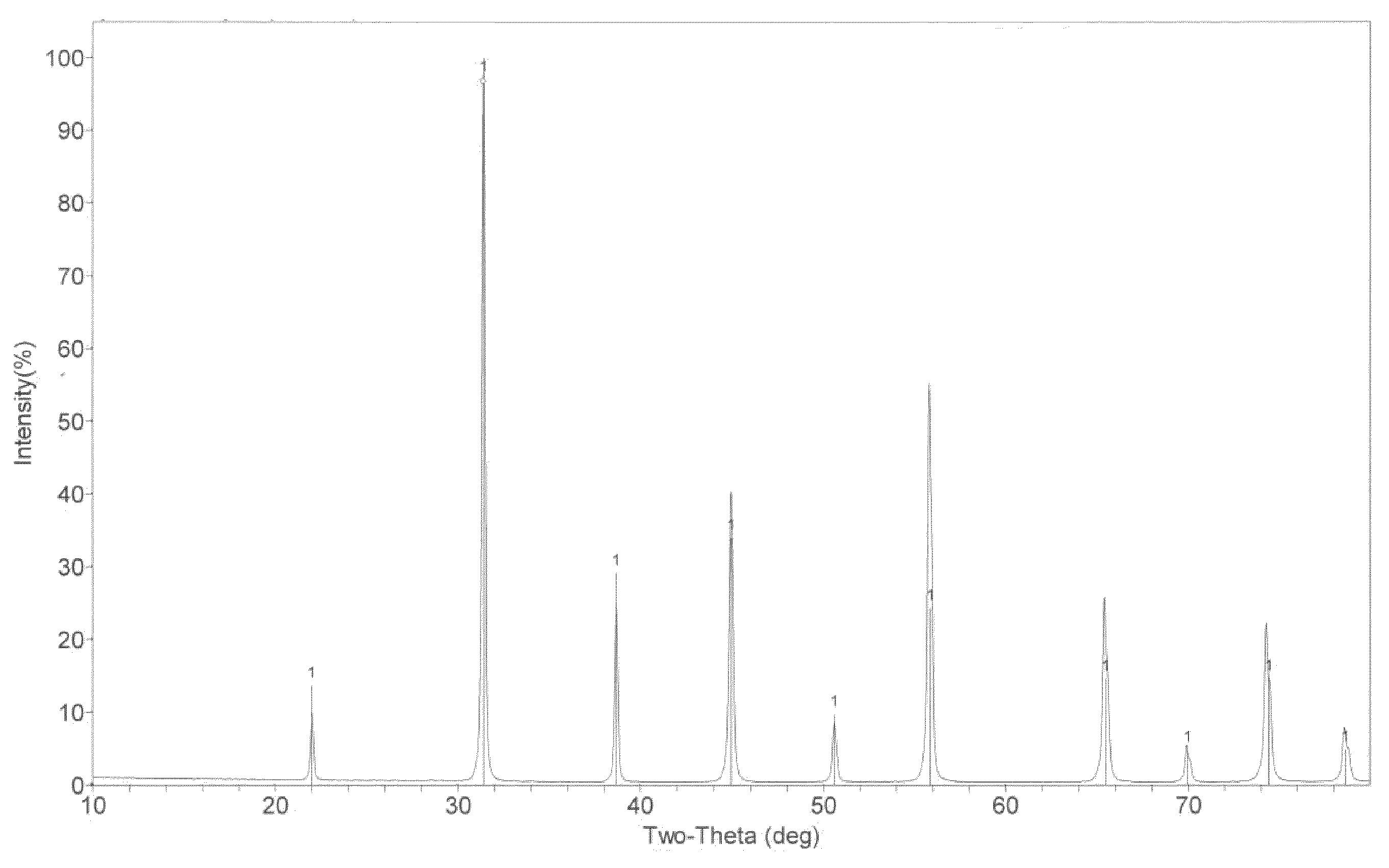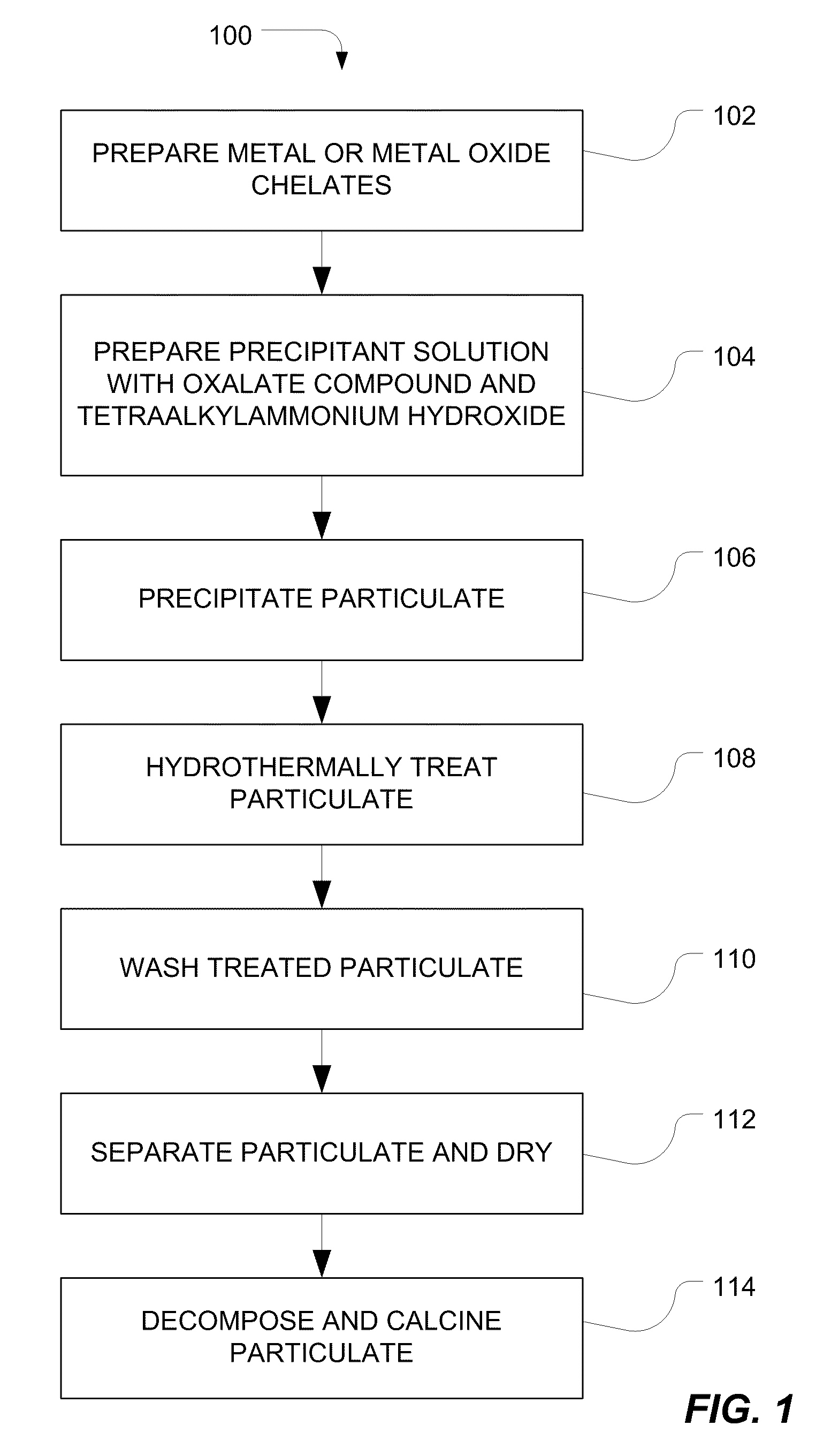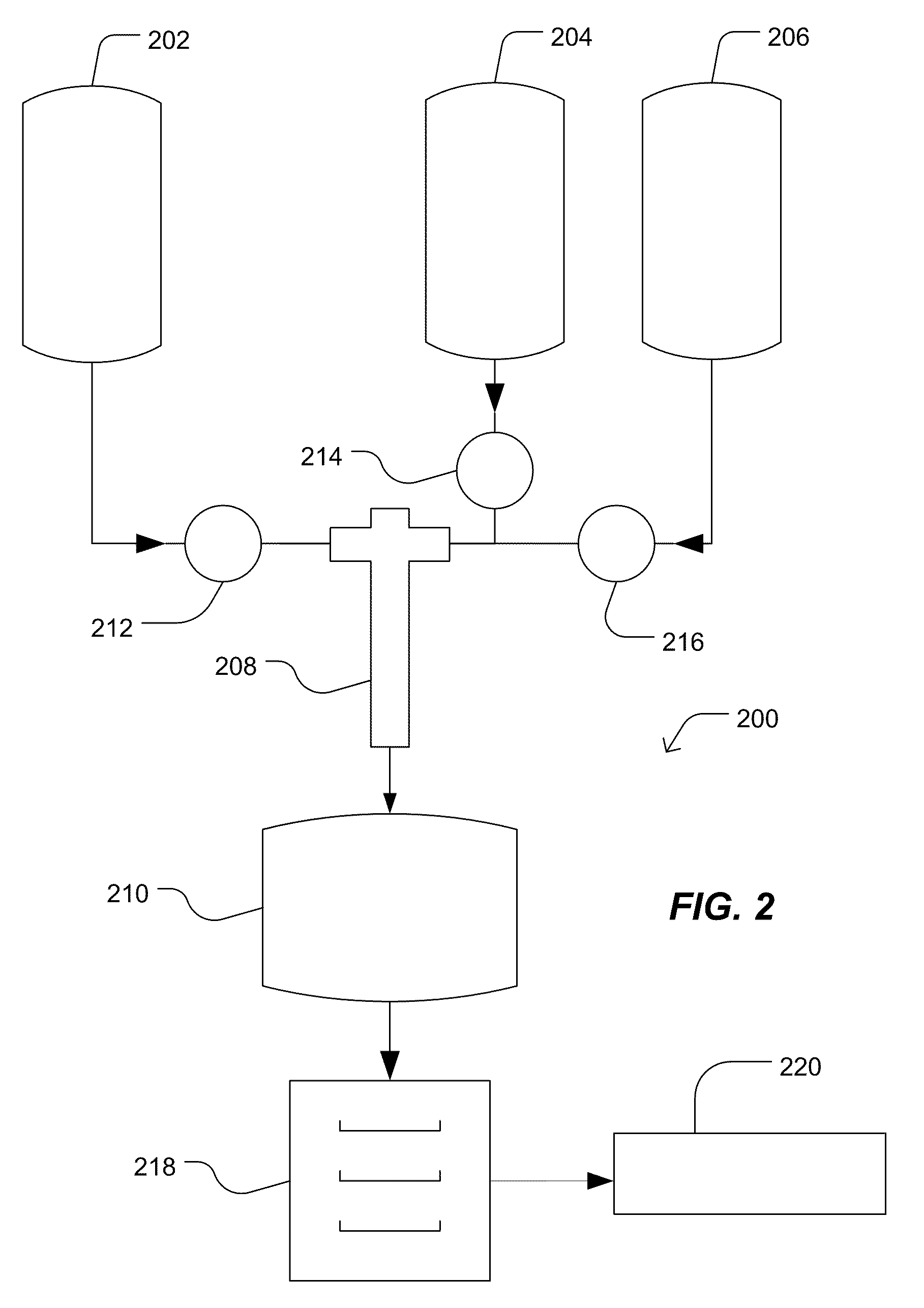Method of Preparing Ceramic Powders
a technology of ceramic powder and ceramic powder, which is applied in the direction of alkaline earth titanates, chemistry apparatus and processes, oxygen/ozone/oxide/hydroxide, etc., can solve the problems of increasing the amount, reluctance to employ these techniques, and additional processing steps still required
- Summary
- Abstract
- Description
- Claims
- Application Information
AI Technical Summary
Problems solved by technology
Method used
Image
Examples
example 1
[0112]Two reactant streams are introduced into a tube reactor. The first stream includes barium nitrate, organic titanium chelate available under the Tradename Tyzor® from DuPont™, and trace amounts of other metal nitrates and metal or oxometal citrates, including metals selected from calcium, zirconium, yttrium, manganese, neodymium, tin, zinc, vanadium, niobium, tantalum, molybdenum, tungsten, lanthanum, hafnium, or chromium. The second stream includes a mixture of tetramethylammonium hydroxide and tetramethylammonium oxalate. The first stream has a flow rate about four times greater than the flow rate of the second stream. The tube reactor has a turbulence intensity of approximately 8.3×1010 cm / s3 and a Reynolds number of approximately 78,000. The pH of the solution is maintained between 10 and 12 and the temperature is approximately 95° C. for both streams.
[0113]The particulate material formed in the reactor is hydrothermally treated using a pressure tank with a rating of 300 ps...
example 2
[0115]For Example 2, streams 1 and 2 are the same as in Example 1. The two reactant streams are introduced into a tube reactor. The first stream includes barium nitrate, organic titanium chelate available under the tradename Tyzor® from DuPont™, and trace amounts of other metal nitrates and metal or oxometal citrates, including metals selected from calcium, zirconium, yttrium, manganese, neodymium, tin, zinc, vanadium, niobium, tantalum, molybdenum, tungsten, lanthanum, hafnium, or chromium. The second stream includes a mixture of tetramethylammonium hydroxide and tetramethylammonium oxalate. The first stream has a flow rate about four times greater than the flow rate of the second stream. The tube reactor has a turbulence intensity of approximately 1.9×107 cm / s3 and a Reynolds number of approximately 27,000.
[0116]The particulate material formed in the reactor is hydrothermally treated using a pressure tank with a rating of 300 psi at 150° C. The tank top is chilled to condense wate...
example 3
[0119]A process similar to the process of Example 2 is performed using nine constituent metal ions. The nine constituents in the starting aqueous mixture range in concentration from 50 to several thousand ppm. After the powder production process is complete, the constituents range from undetectable concentrations to a maximum of 8.44 ppm. The percent each of the constituent crystallized in the composition-modified barium titanate powder range from 99.52% to 100% as summarized in Table 4.
TABLE 4Liquid Analysis for Powder PreparationPrePrePostPostPercentProcessProcessProcessProcessYield(ppm)(mg)(ppm)(mg)(%)Barium415003078888.44148899.52Tyzor ®11780873960.50310.5199.99COMP #14890362780.60412.6299.97COMP #2266.319760.00100.00COMP #3102.7761.70.00100.00COMP #4589.343720.00100.00COMP #577.60575.70.00100.00COMP #6525.138950.3888.1199.79COMP #747.52352.60.00100.00
PUM
| Property | Measurement | Unit |
|---|---|---|
| temperature | aaaaa | aaaaa |
| pH | aaaaa | aaaaa |
| pH | aaaaa | aaaaa |
Abstract
Description
Claims
Application Information
 Login to View More
Login to View More - R&D
- Intellectual Property
- Life Sciences
- Materials
- Tech Scout
- Unparalleled Data Quality
- Higher Quality Content
- 60% Fewer Hallucinations
Browse by: Latest US Patents, China's latest patents, Technical Efficacy Thesaurus, Application Domain, Technology Topic, Popular Technical Reports.
© 2025 PatSnap. All rights reserved.Legal|Privacy policy|Modern Slavery Act Transparency Statement|Sitemap|About US| Contact US: help@patsnap.com



